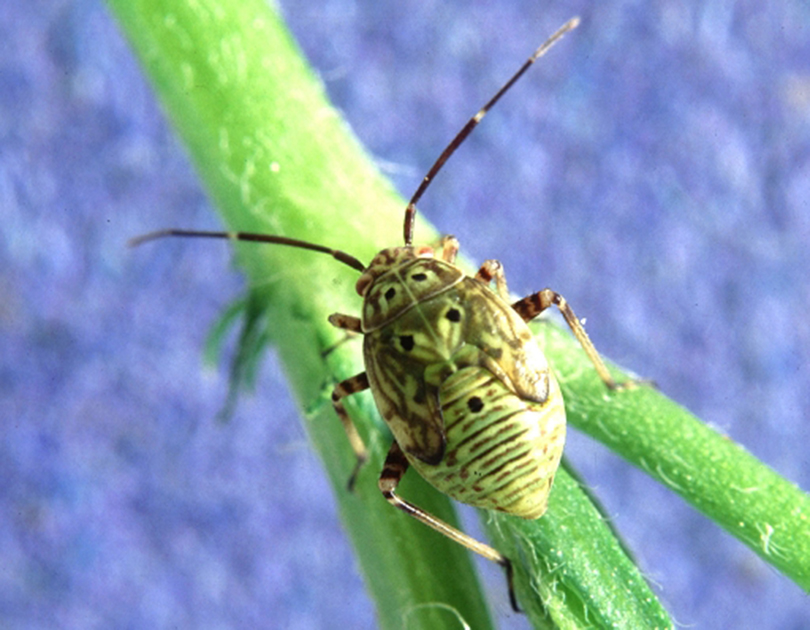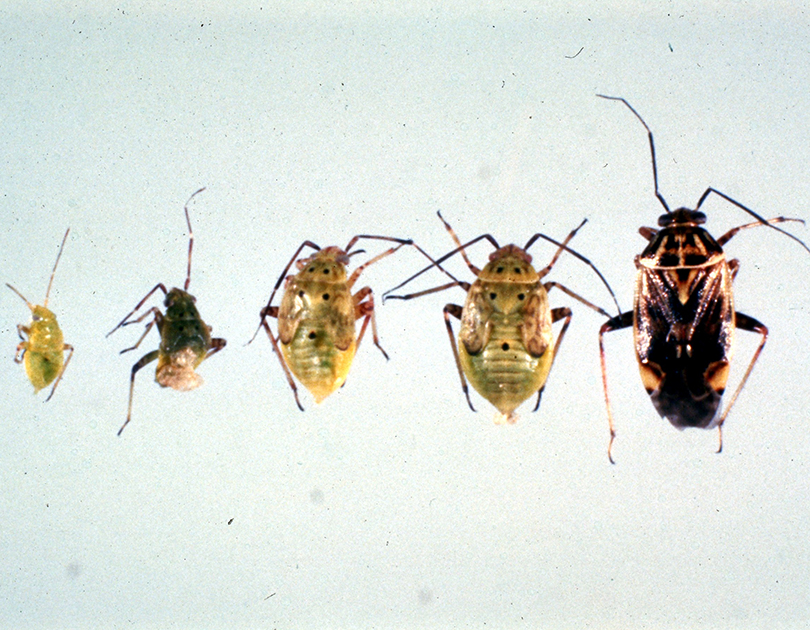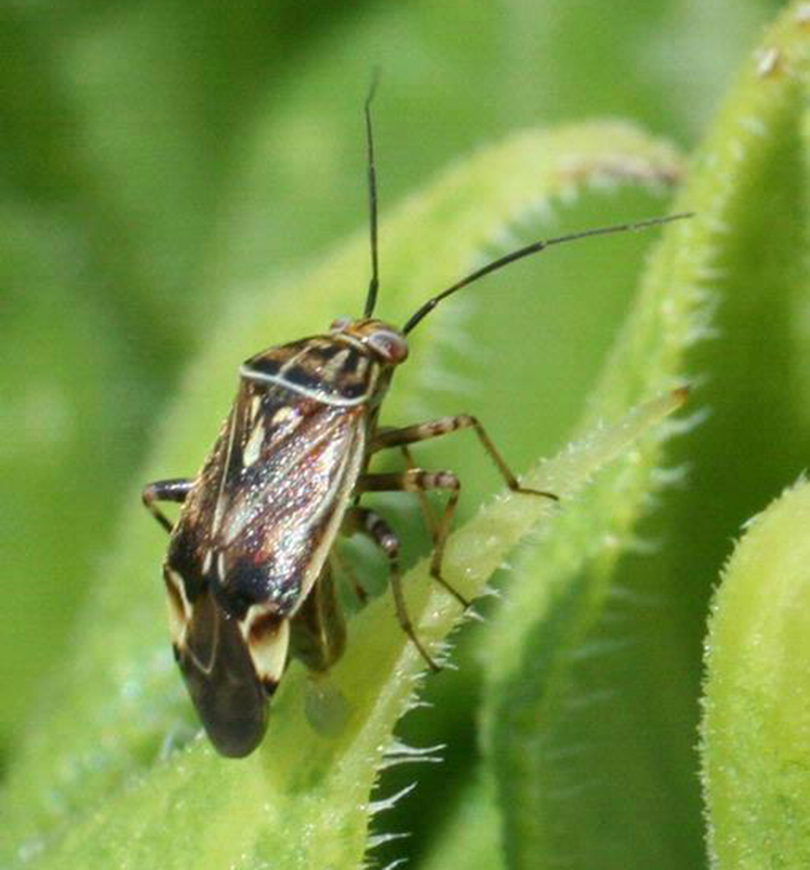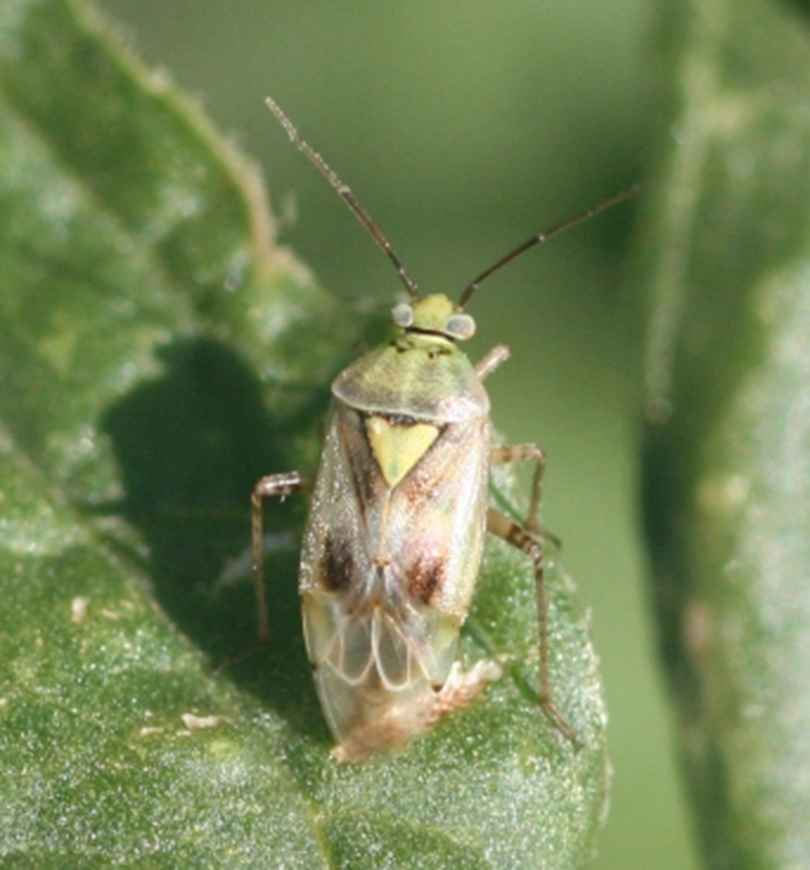Lygus Bug (Tarnished Plant Bug)
Pale Legume Bug (Lygus elisus)
Tarnished plant bug (Lygus lineolaris)
Western tarnished plant bug (Lygus hesperus)
Hosts
- Field-grown hemp (primarily for seed)
- Beans
- Leafy greens
- Tomatoes
- Seed crops
- Alfalfa
- A variety of weeds (butterweed, dock, dog fennel, fleabane, golderod, vetch, etc.)
Description
Depending on species, adults have brown bodies with yellow, black, and red markings, and a yellow or green triangle on the upper center of the back. Nymphs are usually lighter in color with dark spotting on their back, lack wings, and have a more rounded form.
Life Cycle
Egg | Nymph | Adult
- About 3 generations per year.
- 3-4 generations per year.
- Overwinter as adults in plant debris.
Damaging Lifestage(s): Nymph, Adult
Damage Symptoms
Adults and nymphs feed on plant cells (not sap) with piercing-sucking mouthparts. Feeding on seeds causes them to shrivel and heavy feeding on flowers may cause bud drop or flower abortion. Symptoms on foliage have not been documented.
Time for Concern
Summer to harvest.
When and Where to Scout
- Visually scout plants or use a sweep net in nearby weeds and regularly examine flowers to monitor for adults and nymphs.
- Monitor weeds surrounding the crop for plant bug activity.
Threat Level
Low to Medium. Hemp grown for CBD oil is not likely to be damaged but plants grown for seed may need closer monitoring.
Occurrence in Utah
Lygus bugs are present in low to average numbers in all hemp fields, but no economic damage has been documented.
Management
- Remove preferred hosts (flowering weeds, legumes, alfalfa) from field edges.
- Control weeds within the field.
When to Consider Treatment
If feeding damage is high. Thresholds have not been developed for hemp.
Look-alikes
Other plant or seed bugs, false chinch bugs, big-eyed bug (beneficial).
Photo Credits
- Western tarnished plant bug adult/ Pale Legume bug adult - Whitney Cranshaw, Colorado State University, Bugwood.org
- Pale legume adult - USU Extension IPM Program
- Tarnished plant bug nymph - Scott Bauer, USDA, Agricultural Research Service, Bugwood.org
- Life stages - University of Georgia University of Georgia Bugwood.org
- Tarnished plant bug adult - Russ Ottens, University of Georgia, Bugwood.org







